Oversynth overcomplicates Dreadbox Nymphes with overlays
Oversynth has produced some overlays for the Dreadbox Nymphes that visualize all the features and parameters in a mind-bogglingly colourful way.
Oversynth Overlay for Nymphes
The Nymphes overlay from Oversynth creates a complete cheat sheet for every parameter and menu function and slaps it on the front of the synth. All the menu items are pulled out and shown with every option within every menu mapped and colour-coded. The labelling has been repositioned and expanded upon and even notes the position at which the LFO waveforms change. Every parameter with a MIDI CC# is listed for easy mapping. You’d certainly never need to look in the manual again.
I’m sure the idea is to make it easier to use, but to me, it looks hideously complex. The high contrast colouring is there to make it easier to see in low light but also makes the synth terribly ugly. If I wanted to look at the manual while playing a synthesizer, I can easily do that without being bombarded by every parameter all the time. The beauty and thought that Dreadbox has put into the interface and workflow has been totally annihilated.
Perhaps this would be good just to plop on the front while you do some editing? Then you could take it off again. Maybe, but you have to remove the two knobs to put it on, which requires a screwdriver. So this is designed more as a permanent interface replacement rather than an occasional cheat sheet.
Useful to someone
I’ve no doubt that the overlays, available in various colour combinations, will be useful for people wanting to get to the bottom of the Nymphes. But honestly, it’s not that hard to find your way around. Check out my review of the Nymphes to see what I mean. There’s something to be said for the high contrast for low light conditions or people with visual impairment but Nymphes is a beautiful piece of work and this seems so unnecessary.
I think Oversynth has done some great overlays for other synths. The Moog Mother-32 or Minitaur ones, for instance, are excellent and add colour and usefulness to the front panel without overwhelming you. The Nymphes overlay is, for me, a bit of a miss. But if they help someone get more out of the excellent Nymphes then that’s got to be a good thing.
They are available in 6 colours for $27 each.

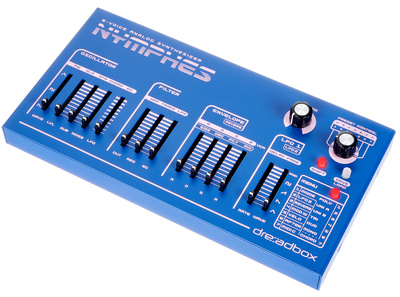
10 responses to “Oversynth overcomplicates Dreadbox Nymphes with overlays”


 4,0 / 5,0 |
4,0 / 5,0 | 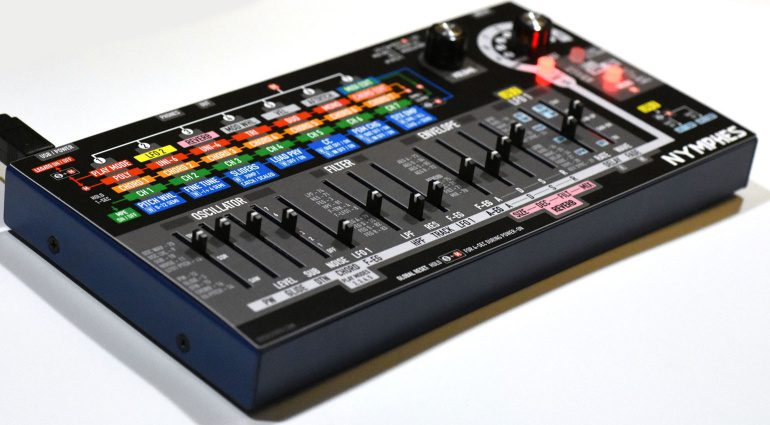
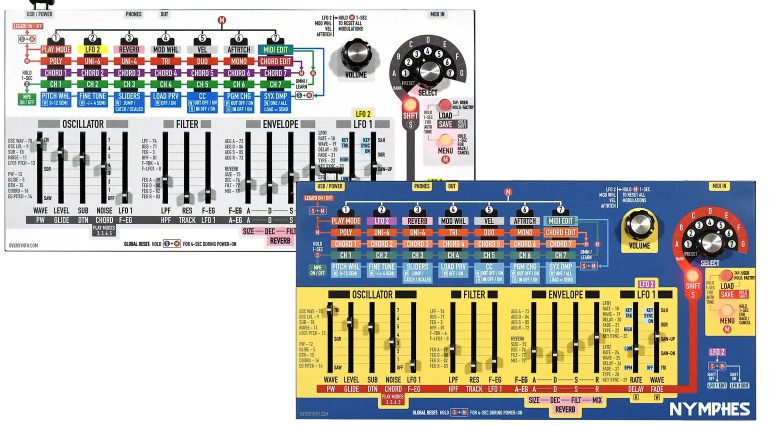
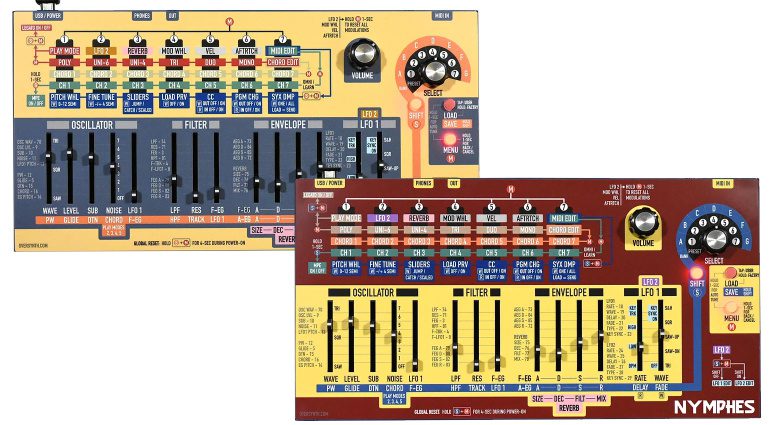



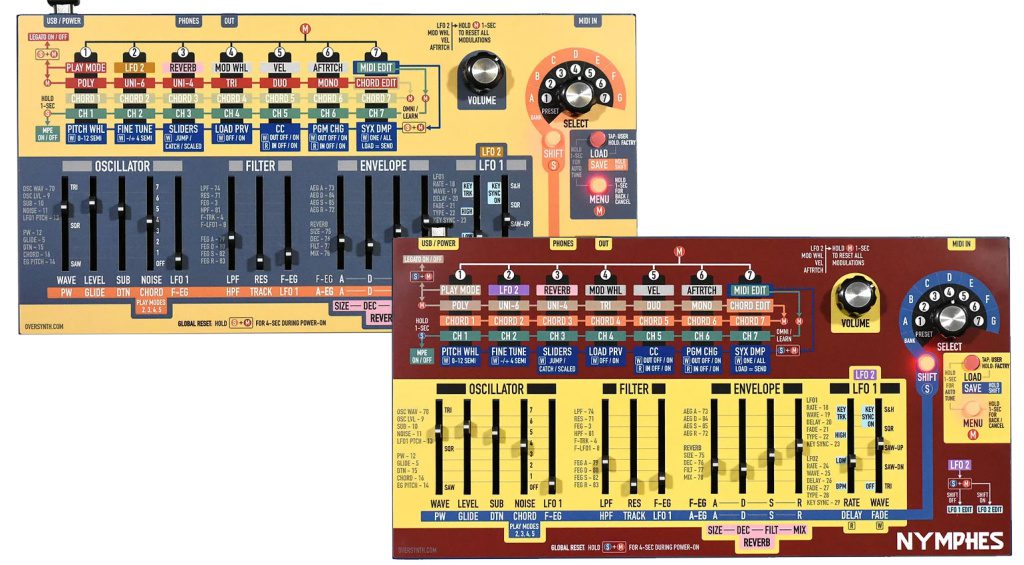
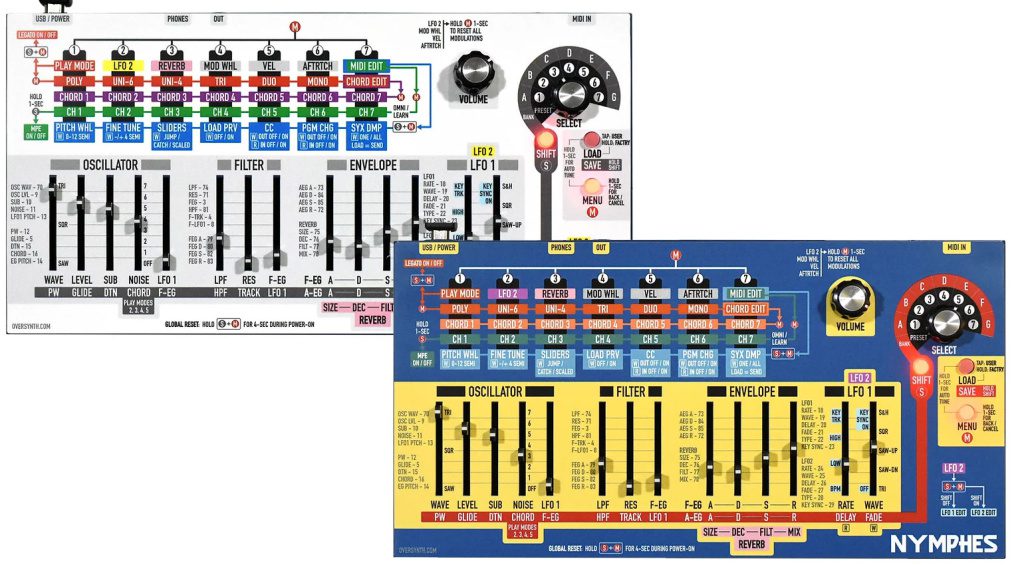
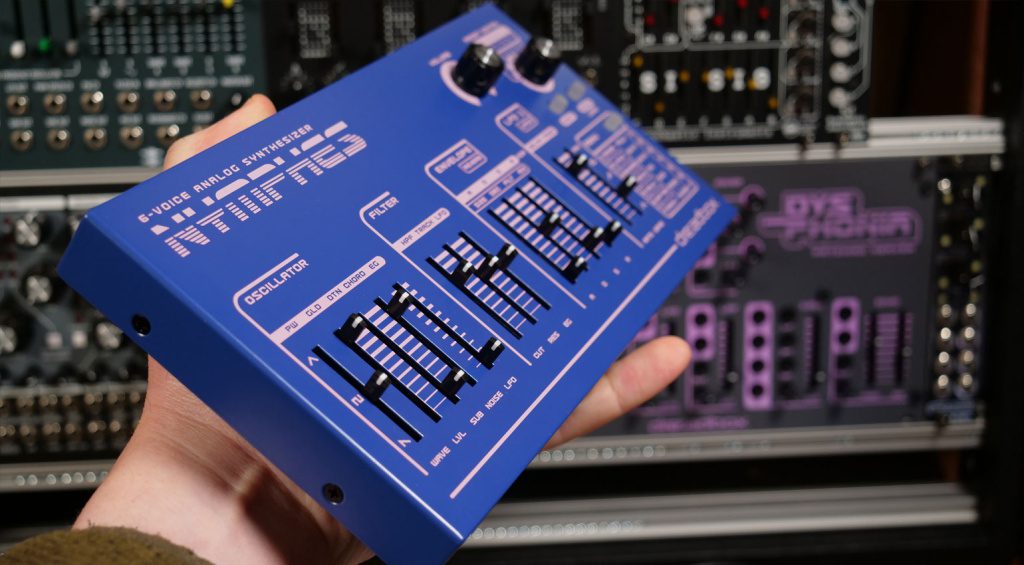

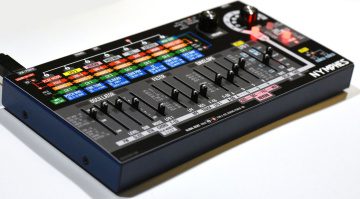


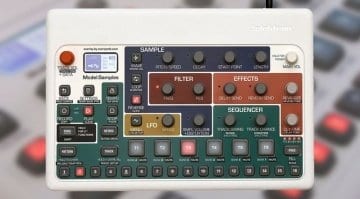

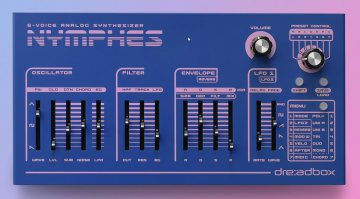
As a Nymphes owner, I totally agree with the sentiment in this article.
It’s all about keeping on programming with the manual close by to learn it by heart. Or get a midi controller – software or hardware – if you want full access.
It’s a great idea, but my god the colour schemes give me a headache. Too many colours, with too much information equals brainhurt.
Let’s be real though. It’s Dreadbox that’s giving everyone the headache. And it’s people like Vincent that give Dreadbox (and any other company he gets to review) too much credit.
It’s good that the reverb is so terrible that you don’t wanna use it, That makes it a little bit easier to control.
Do you mean me? My name’s Robin, thanks. Not a fan of the Nymphes then?
I like the nymphes for its sound, but it comes with a lot of cons. Most reviews including yours are putting those cons too much under the rug and give Dreadbox too much credit.
And if reviews are too positive than companies won’t even try to push it to the next level but they will drive up the prices. Which of course is not a good thing when most people in the world are struggling to get by.
Personally I like it better when reviewers buy the gear with their own money so no strings are attached. You can’t have an honest unbiased review otherwise imo. No matter how big the disclaimer is made.
Not sure why I bother talking about it though cause I haven’t met a single influencer yet that’s willing to admit this and changing their actions. I get why, I just think less bad advertising will do the world a lot more good.
Perhaps you can’t get people to change their way of doing things because you’re assuming that you’re right when in my experience, it’s not really that easy. There’s no arbiter of truth when it comes to synthesizers and reviews, there are just opinions and human reactions to technology. I hear accusations of bias all the time and it’s a weird one because it’s not really possible to give an unbiased review on anything. We all carry our bents and bias’ toward certain things and for different reasons. Buying something yourself certainly does not free you from bias, in fact, we tend to want to reinforce the rightness of our purchase in our review making it even more likely to be positive. For myself and for many of my fellow reviewers there’s very little to be gained from lavishing praise on an unworthy product anymore than there is to slag off someone’s work for no good reason. What most of us aim to do is give an honest assessment of a product and how it made us feel in its context. Most products that make it to market are pretty good and so there does tend to be a sense of positivity, but there are also things that don’t go right that are pointed out. Reviewing products well takes time and experience – and to build up a decent approach takes a lot of products. No one could be expected to buy lots of different headphones, synths or audio interfaces just so you can benefit from their insight on YouTube – YouTube doesn’t pay that well. I review products for Gearnews and Sound On Sound magazine and both these places pay me to write the review – I don’t get paid in gear and I’m not getting given a product, it’s on loan. Although sometimes they don’t ask for it back – and I have shelves of gear that I don’t own that’s waiting to go back to the manufacturer. It’s nice to be given new gear to play on, sure, but that’s really not the whole story and not as awesome as you think it is.
But to the review in question, I pointed out all sorts of things. I got the Nymphes on loan rather than as a free gift. And I got it a bit later than others which gave me a chance to watch other reviews. My perception from those reviews was that the interface was heavily criticised and so i paid particular attention to that, writing at length about what people didn’t like about it and sharing my view that after using it for a few hours I had no problem using it. I acknowledged the difficulty and then shared my view on overcoming it – that’s an honest appraisal not a knee-jerk reaction. I pointed out that the reverb was weird and not what I was expecting but also described what it was good for – not for everyone and not for me. I talked about the pros and cons of not having effects, the pros and cons of a mono output. I’m looking for balance, I’m looking to comment on why something is as it is rather than saying “arrrg! No effects? That’s shit!” which, for me, doesn’t help anyone. And in closing I talk about the compromises and whether Dreadbox has pulled off a decent product or not. I really liked the sound, I enjoyed playing it and for me that’s why the review sounds positive – because it was a positive experience. How more honest do you need?
In talking to manufacturers about their products (as you do when you’re a reviewer) I’ve found them to be hyper sensitive to any criticism. By which I mean they will pick up and respond to the slightest doubt or smallest comment in a review – these are their babies after all. They are always listening and wanting to improve and incorporate suggestions. Many times I’ve had companies come up with new firmware after I’ve pointed out flaws or tripwires in their products because often they are too close to the product to see where it could work better. I think that’s good for everyone.
You don’t have to trust anyone on the internet but all the reviewers I know are just trying to give an honest appraisal of a product. The disclaimers are true in intention and it’s in our interest to be believable even as we manage our own bias. So I think you should give reviewers a break and take them at face value – they are just trying to be helpful to people who are trying to make good decisions on the gear they buy.
I never gave Dreadbox too much credit. Actually the opposite, finding the interface on Nymphes quite lacking.
If you’re in the mood for an instant migraine, Google image the “deepwater” Oversynth overlay for the Synthstrom Deluge. If Oversynth’s goal is to help simplify the UI for the user, they needs serious help with their design/font/color schemes. Their overlays are a mess.
Thanks for the feedback. We also have other Deluge overlay designs available.
https://www.oversynth.com/product-page/black-minimal-overlay-for-synthstrom-deluge
Drop us an email if you have requests for a specific design or color scheme on any of our products: human@oversynth.com
Thanks!
Thanks for the write-up and feedback on our work. We also posted some more minimal overlay designs for Nymphes for folks who mostly want to tone down the front panel a bit.
I just wanted to let you and your readers know that we’re open to suggestions, so drop us an email if you have a design request that might help with your specific setup: human@oversynth.com.
We’ve learned that different people want different things from a synth front panel, and people often have strong opinions about what designs should or should not exist. We appreciate all feedback. We all benefit and learn from the discussion!
You are currently viewing a placeholder content from Facebook. To access the actual content, click the button below. Please note that doing so will share data with third-party providers.
More InformationYou are currently viewing a placeholder content from Instagram. To access the actual content, click the button below. Please note that doing so will share data with third-party providers.
More InformationYou are currently viewing a placeholder content from X. To access the actual content, click the button below. Please note that doing so will share data with third-party providers.
More Information